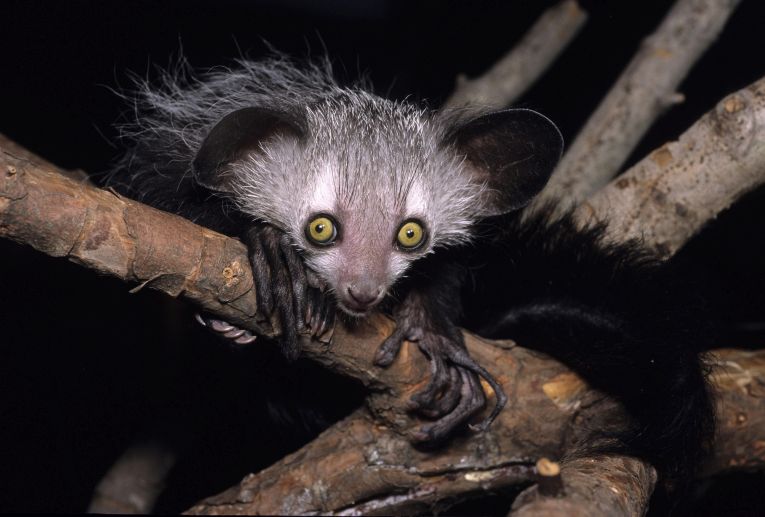Aye-aye image; Credit: © David Haring
The aye-aye and the Sunda slow loris are well known primates, partly because of their conservation needs. One is a highly-specialised lemur while the other is also non-simian, nocturnal and exposed to naturally-occurring alcohol. The centre of this research by Samuel R. Gochman, Michael B. Brown and Nathaniel J. Dominy of Dartmouth College in New Hampshire, US, is enzymatic evidence that primates can digest alcohol, given the genetic tools to produce the necessary biochemistry.
Entitled Alcohol discrimination and preferences in two species of nectar-feeding primate, The paper appears today in Royal Society Open Science. Tales of underage drinking and over-indulging apes may appeal, but this research is based on an assumption that dietary alcohol can add to the calories taken in by an animal and perhaps even improve its survival chances.
The loris is known to consume nectar with 0.6% ethanol while the aye-aye concentrates on certain beetle grubs, using its unique extended finger to extract them from trees. The nectar is freely available from palms and similar trees for both species, making up 20% of the wet-season feeding of some aye-ayes. Tropical temperatures and yeasts naturally convert sugars to alcohol within the fruits and even in extra-floral organs, just as wine yeasts on grape skins (the bloom
that is clearly visible) do .
In order to investigate properly, serial dilutions of ethanol were provided to 3 animals as nectar simulations. The results showed high discrimination by the 2 aye-ayes. Higher alcohol concentrations (up to 5% EtOH) were also preferred. The loris had an awkward aversion to tap water, but otherwise also preferred higher alcohol concentrations (up to 4% EtOH.)
Many enzymes are involved in alcohol metabolism, and all would need investigation along with genes that program them. Now that genomes are available for some species, that would be feasible. The last common ancestor of humans and other apes can be assumed to have consumed fermented food, given the presence of a certain mutation in the lineage. Whether many animals consume the plentiful fermented fruit of a rainforest seems a question that hardly needs asking, when coconut and many other fruits and juices are habitually consumed by man and monkey. It is in the biochemistry and the genomes that we will find the answer as to whether ethanol is actually useful in providing valuable energy or simply a distraction. It seems to attract many species but is rejected and obviously distasteful to others. The 2 involved here are obviously of the former group, along with most of our relatives. The authors obviously see links with the tropical African origins of hominid species.










